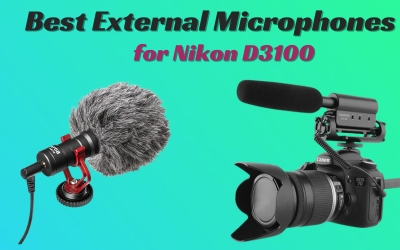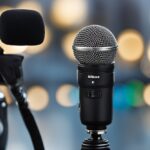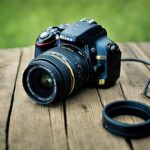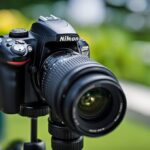Can you connect a condenser mic directly to a speaker? It’s a question that many people ask when they’re setting up a home recording studio or trying to amplify their voice in a live setting. While it’s possible to connect a condenser mic directly to a speaker, there are some things you need to keep in mind.
In this article, we’ll explore the world of condenser microphones and speakers. We’ll look at the differences between active and passive microphones, and we’ll explain how speakers and amplification work.
We’ll also show you how to connect a mic to a speaker, and we’ll give you some troubleshooting tips and tricks. So, whether you’re a seasoned pro or a beginner, read on to find out everything you need to know about connecting a condenser mic directly to a speaker.
Key Takeaways
- While it’s possible to connect a condenser mic directly to a speaker, it’s not always the best option.
- Condenser microphones require phantom power to function properly, which can be provided by a mixing board or audio interface.
- To get the best sound quality, it’s recommended to use a mixing board or audio interface to connect your condenser mic to a speaker.
Table of Contents
ToggleCan I connect a condenser mic directly to a speaker?
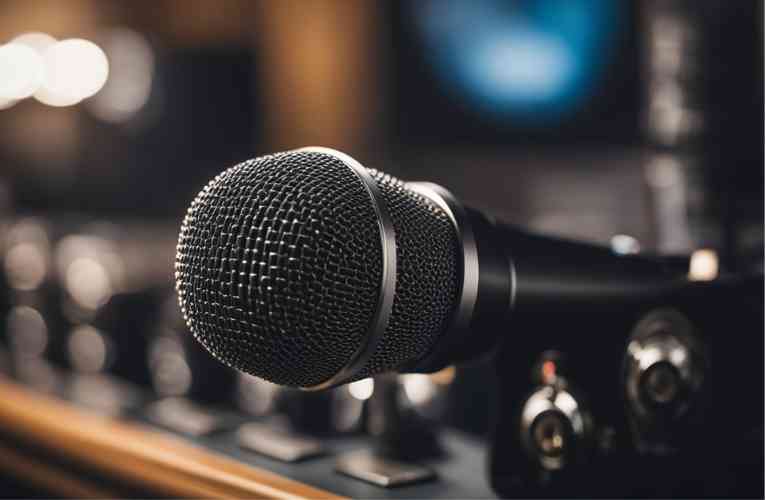
Yes, you can connect a condenser mic directly to a powered speaker that works with mic-level signals. However, it’s not recommended for professional events or when you have multiple audio sources.
Connecting a condenser mic directly to a speaker requires an XLR cable and a powered speaker with a mic-level input. Make sure to toggle the speaker switch to the mic level signal and check the sound level after turning on the speaker.
It’s important to note that condenser mics require phantom power to function properly, which is typically provided by a mixer or audio interface. Without phantom power, the mic may produce a weak or distorted signal.
For the best sound quality and control, it’s recommended to use a mixer or audio interface to connect your condenser mic to your speaker. This allows you to adjust levels, add effects, and balance multiple audio sources.
Related Posts:
Speakers and Amplification
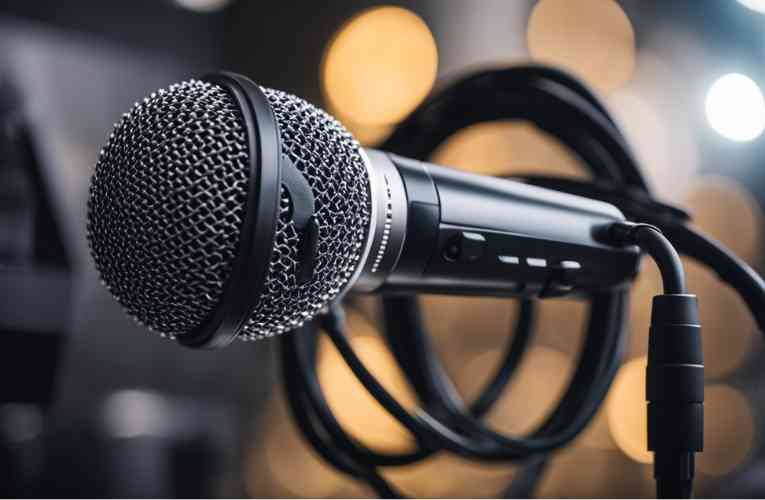
When it comes to connecting a condenser mic directly to a speaker, it’s important to understand the different types of speakers and how they work. There are two main types of speakers: active and passive.
Active Speakers
Active speakers, also known as powered speakers, have a built-in amplifier and do not require an external amplifier to function. These types of speakers are ideal for connecting a condenser mic directly to a speaker. They have a preamp built-in that can handle mic-level signals.
When connecting a condenser mic to an active speaker, you will need an XLR cable to connect the mic to the speaker. Make sure that the speaker is turned off before connecting the cable. Once the cable is connected, turn on the speaker and adjust the volume as needed.
Passive Speakers
Passive speakers, on the other hand, require an external amplifier to function. These types of speakers are not ideal for connecting a condenser mic directly to a speaker. They require a line-level signal to function properly, which means that the signal needs to be boosted by an external amplifier.
If you want to connect a condenser mic to a passive speaker, you will need to use a mixer or an external preamp to boost the signal before it reaches the speaker. This can be a bit more complicated than connecting a condenser mic to an active speaker, but it can be done with the right equipment.
Related Post
- Proper placement of a condenser mic in relation to vocals
- Positioning your condenser mic for optimal vocal performance
- How to sing effectively using a condenser mic
Connecting a Mic to a Speaker
Connecting a condenser mic directly to a speaker is possible, but it requires some considerations. In this section, we will discuss the two common methods of connecting a microphone to a speaker and the use of audio interfaces.
Connection Methods
There are two ways to connect a microphone to a speaker: using a powered speaker or an unpowered speaker. If you use a powered speaker, it has an amplifier built-in, and you can connect a microphone directly to it. However, if you use an unpowered speaker, you need an external amplifier to connect the microphone.
When connecting a microphone to a powered speaker, make sure the speaker can handle mic-level signals. Mic-level signals are weaker than line-level signals, and not all speakers can handle them. If the speaker can’t handle mic-level signals, the sound will be distorted, and you won’t get the best audio quality.
Audio Interfaces
An audio interface is a device that connects to your computer or mobile device and allows you to record audio. It also provides additional features such as preamps, EQ, and compression. If you want to connect a condenser mic to a speaker, an audio interface is a good option.
An audio interface allows you to connect your microphone to your computer or mobile device and use software to adjust the audio levels and settings. You can also use an audio interface to connect your microphone to a speaker, and it will provide better sound quality than connecting the microphone directly to the speaker.
Troubleshooting Common Issues
If you are experiencing issues when connecting a condenser microphone directly to a speaker, there are a few common problems that you might encounter. This section will outline some of these issues and provide some troubleshooting tips.
Feedback and Distortion
One common issue that you might encounter when connecting a condenser microphone directly to a speaker is feedback and distortion. This occurs when the microphone picks up the sound from the speaker and feeds it back into the system, causing a high-pitched squealing sound. To avoid this problem, you can try the following:
- Move the microphone further away from the speaker
- Reduce the volume of the speaker
- Use a noise gate or a compressor to reduce the feedback
Volume and Clarity Problems
Another common issue that you might encounter when connecting a condenser microphone directly to a speaker is volume and clarity problems. This occurs when the sound from the microphone is too quiet or muffled, making it difficult to hear or understand. To address this issue, you can try the following:
- Adjust the gain on the microphone to increase the volume
- Use a pop filter to reduce plosives and improve clarity
- Move the microphone closer to the sound source to improve clarity
By following these tips, you can troubleshoot some of the common issues that you might encounter when connecting a condenser microphone directly to a speaker. Remember to test your setup before your performance or recording to ensure that everything is working properly.
Conclusion
In conclusion, connecting a condenser mic directly to a speaker is possible but not recommended. It can result in a lack of control and poor sound quality. It is better to use a mixer or an audio interface to connect your condenser mic to a speaker. This will allow you to adjust the levels and EQ, resulting in a better sound. Remember to use a balanced XLR cable and to turn on phantom power if needed. By following these tips, you can ensure that your condenser mic sounds great and is connected properly.
Frequently Asked Questions
What equipment is needed to connect a condenser microphone to a speaker?
To connect a condenser microphone to a speaker, you will need an XLR cable and a mixer or an amplifier. The XLR cable will connect the microphone to the mixer or amplifier, which will then send the signal to the speaker. Some microphones have built-in amplifiers and can be connected directly to a speaker, but this is not the case for most condenser microphones.
Is an amplifier necessary to use a condenser mic with a speaker?
Yes, an amplifier is necessary to use a condenser microphone with a speaker. Condenser microphones require power to operate, and amplifiers provide that power. Without an amplifier, the microphone will not function properly and the sound will be too weak to be heard.
How can I connect a condenser microphone to a Bluetooth speaker?
To connect a condenser microphone to a Bluetooth speaker, you will need a Bluetooth-enabled mixer or amplifier. The microphone will connect to the mixer or amplifier via an XLR cable, and the mixer or amplifier will then send the signal to the Bluetooth speaker. Some Bluetooth speakers have built-in mixers or amplifiers and can be connected directly to the microphone, but this is not the case for most Bluetooth speakers.
Are there any special considerations when using a wired condenser mic with a speaker?
When using a wired condenser microphone with a speaker, there are a few special considerations to keep in mind. First, make sure that the microphone is properly grounded to prevent unwanted noise or interference. Second, be sure to set the microphone level correctly to avoid distortion or feedback. Finally, be aware that condenser microphones are sensitive to sound and may pick up background noise or other unwanted sounds.
What is the proper way to connect a microphone to a speaker through a computer?
To connect a microphone to a speaker through a computer, you will need an audio interface or a USB microphone. The microphone will connect to the audio interface or USB microphone, which will then send the signal to the computer. From there, you can use software to adjust the levels and settings before sending the signal to the speaker.
Can a condenser microphone be connected to a speaker’s Aux input?
Yes, a condenser microphone can be connected to a speaker’s Aux input, but you will need an amplifier or mixer to boost the signal. The microphone will connect to the amplifier or mixer via an XLR cable, and the amplifier or mixer will then send the signal to the speaker’s Aux input.

